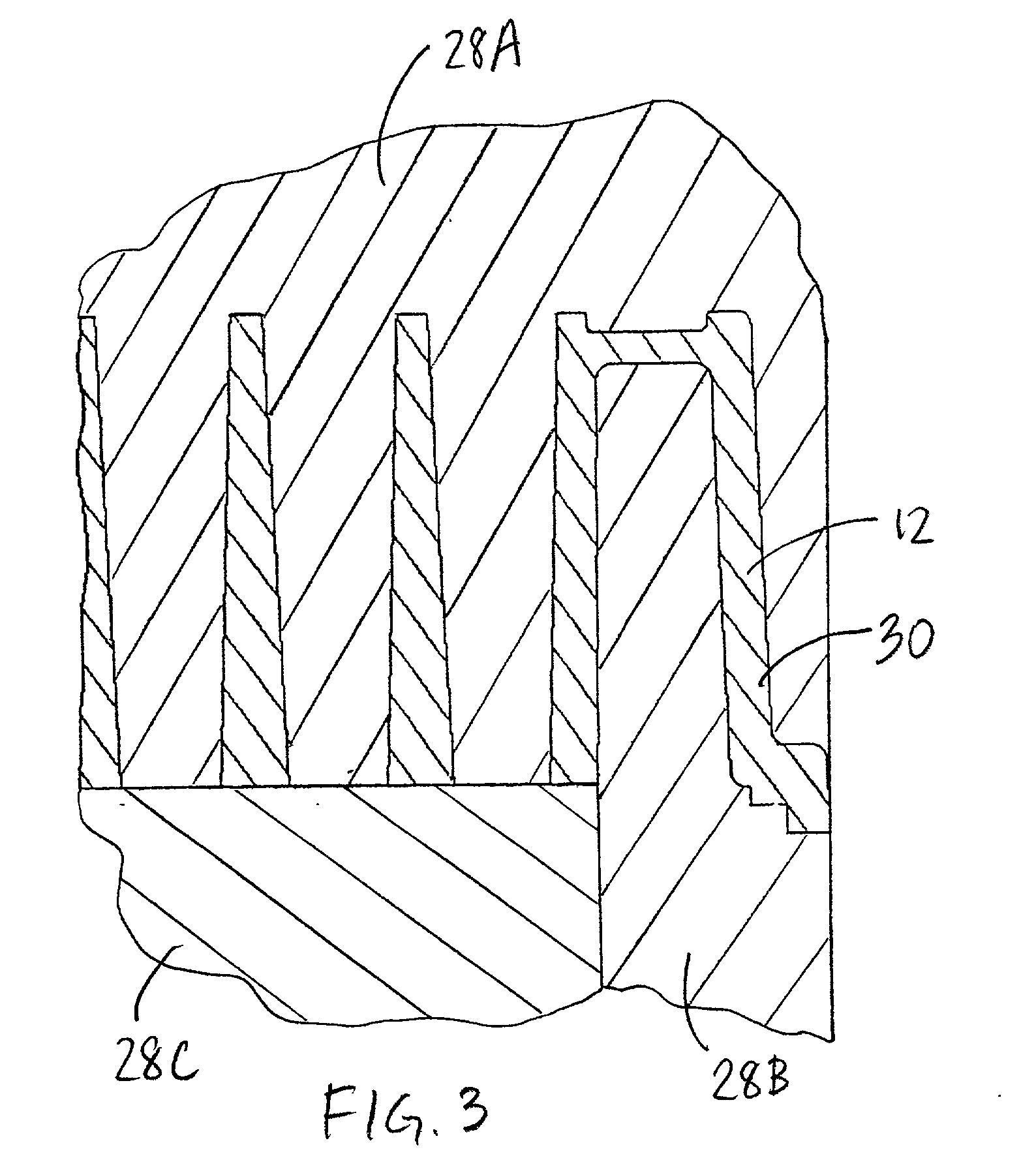Multi-well plate fabrication
a multi-well plate and plate technology, applied in the field of multi-well plate fabrication, can solve the problems of deformation of the lens surface, difficulty in measuring requiring a constant focal length, and several deficiencies of prior art techniques, and achieve the effect of reducing volum
- Summary
- Abstract
- Description
- Claims
- Application Information
AI Technical Summary
Benefits of technology
Problems solved by technology
Method used
Image
Examples
Embodiment Construction
[0015] With reference to FIG. 1, a typical multiwell plate 10 is shown therein having a multiwell plate body 12 with an array of wells 14 formed therethrough. The use of multiwell plates in bioassays is well known in the prior art, and the multiwell plate 10 is formed to be compatible, both structurally and dimensionally, with such bioassay techniques. In addition, certain arrays of the wells 14 have been accepted in the prior art, including an array of 96 wells, 384 wells (as shown in FIG. 1), and 1,536 wells. Beyond the conventional numbers of wells, any number may be used in any array configuration.
[0016] Referring to FIG. 2, the multiwell plate body 12 is preferably unitarily formed of a thermoplastic material, and includes a sidewall 16 and a network of inner walls 18 which define the wells 14. The walls 18 are preferably tapered so as to diverge from upper ends 20 of the walls 18 to lower ends 22 of the walls. As a result, the wells 14 are each downwardly convergent.
[0017] A c...
PUM
| Property | Measurement | Unit |
|---|---|---|
| Volume | aaaaa | aaaaa |
| Vacuum | aaaaa | aaaaa |
| Opacity | aaaaa | aaaaa |
Abstract
Description
Claims
Application Information
 Login to View More
Login to View More - R&D
- Intellectual Property
- Life Sciences
- Materials
- Tech Scout
- Unparalleled Data Quality
- Higher Quality Content
- 60% Fewer Hallucinations
Browse by: Latest US Patents, China's latest patents, Technical Efficacy Thesaurus, Application Domain, Technology Topic, Popular Technical Reports.
© 2025 PatSnap. All rights reserved.Legal|Privacy policy|Modern Slavery Act Transparency Statement|Sitemap|About US| Contact US: help@patsnap.com



